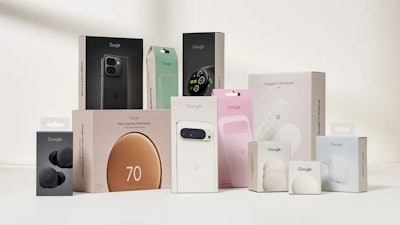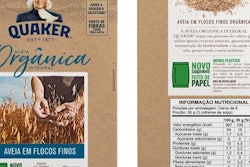What You Will Learn in This Story:
- How Google Replaced plastic with paper in hardware packaging
- How Veritiv and Shandong Kaili Specialty Paper Company contributed to project
- Google's aim to share its tactics and prompt industry-wide change
In October 2020, Google boldly pledged to eliminate plastic from its hardware packaging by 2025. At the time, the company had already achieved a 94% reduction, but the remaining 6% presented the most significant challenges. These final components, from shrink wrap to plastic tape and labels, required innovative solutions. Through extensive research, prototyping, and development of fiber-based alternatives, Google has reached its goal ahead of schedule, creating packaging for all Pixel, Fitbit, and Nest devices that is entirely plastic-free.
The journey to this achievement was marked by close collaboration with suppliers and a reimagining of every aspect of packaging. Google partnered with Veritiv and Shandong Kaili Specialty Paper Company to develop a new type of paper three times stronger and approximately 70% more stretchable than its predecessor. This new paper not only enhances the durability of the packaging but also reduces its carbon footprint during transport due to its lighter weight.
Google introduced a new molded fiber pulp formula inside the box, partially made from recycled newspaper. This material ensures the safety of the devices during transit. The attention to detail extends to the consumer experience, with a new peelable closure label that secures the box and its contents. This label is designed to be tamper-evident, leaving no rough or torn edges when removed, enhancing security and aesthetics.
Google's commitment to sustainability is further reflected in the recyclability of its new packaging. Internal research indicated that the visual appeal and tactile quality of packaging significantly influence consumer recycling behavior and the acceptance of materials by recycling centers. The new design, with its speckled texture and uncoated surface, not only looks attractive but also signals its recyclability to consumers.
Beyond its own achievements, Google aims to inspire broader industry change. The company has updated its Plastic-Free Packaging Design Guide to include insights from its recent developments. This guide provides design, engineering, and operational insights to help other companies create more sustainable packaging. Google's approach underscores the belief that progress in sustainability should be a collaborative effort, encouraging other organizations to share their insights and collectively amplify their impact.


























